How To Camouflage Your Outdoor Cannabis Plants
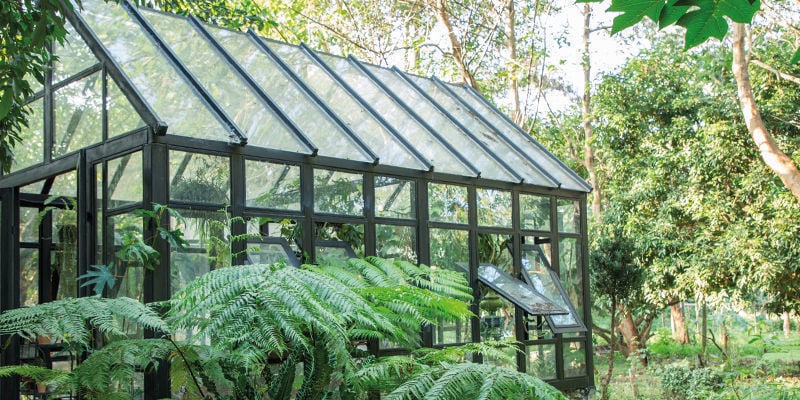
Keeping a cannabis grow secret is critical for most growers. In this article, we explore how to keep your crop camouflaged when growing outdoors, so you can prevent anyone from seeing or smelling your precious plants.
Cannabis that is grown outdoors looks beautiful, can reach monstrous proportions, and can produce huge yields. For those who can grow outdoors, this option is usually the best. However, even those with the space to do so might want to keep their outdoor grow hidden from prying eyes and noses.
In this article, we look at how to camouflage an outdoor cannabis grow to keep you and your plants safe.
Why is it important to camouflage your outdoor cannabis garden?
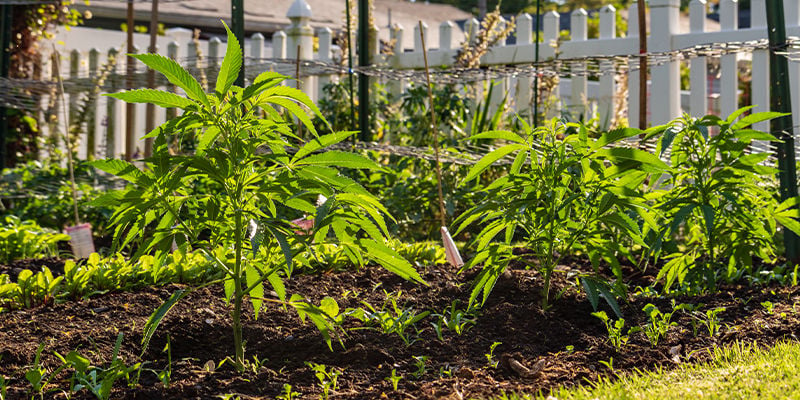
Whether you choose to grow in your backyard or in a distant guerrilla grow location deep in the woods, stealth is vital. The predominant reason outdoor cannabis growers choose to camouflage their crop is because it’s illegal to grow weed in their region. In some European countries, for example, it’s technically possible to get a life sentence for the production of cannabis, making stealth and camouflage a matter of the utmost importance.
And even where growing cannabis doesn’t carry a hefty prison sentence, it is still often looked upon with scorn and disdain, and could quickly sour relations between you and your neighbours, landlord, etc.
For these reasons, if you’re growing marijuana somewhere where it might be frowned upon, it can be a good idea to keep your grow discreet. Even if you don’t camouflage it entirely, making an attempt to shield it from obvious view can make a big difference in how people view you and your pastime, compared to growing several huge cannabis plants in clear view of the neighbours or passersby.
How do you hide an outdoor cannabis grow?
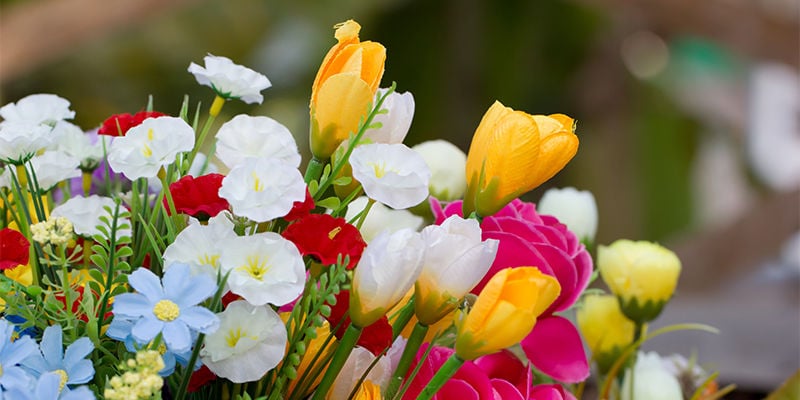
There are many ways to create a clandestine outdoor grow. These range from covering your tracks entirely to throwing others off the path of your potentially illicit horticultural pursuits.
Bear in mind that none of the techniques listed below offer total cover, and there is always some risk associated with growing cannabis in places where the practice is illegal. Ultimately, it’s up to you to weigh up the risks and decide whether you think growing outdoors is worth it or not.
Add fake flowers and decorative potted plants
If you need to quickly camouflage a grow and help it blend into the surroundings, then you’ll need an immediate fix. If you have a fairly bare garden as it is, consider introducing fake plants and/or decorative potted plants that you can buy and use the same day.
If you’re growing just a few cannabis plants that are on the smaller side, then mixing them up with fake or decorative plants can be enough to make them blend in and not catch someone’s attention.
However, remember that cannabis plants are quite distinct, and even those who have never seen one in the flesh can probably identify one immediately upon view, so a few potted plants aren’t going to make one (or a few) weed plants unrecognisable. Plus, no amount of visual camouflage can cover the telltale scent of cannabis (more on this later).
Camouflage with companion plants
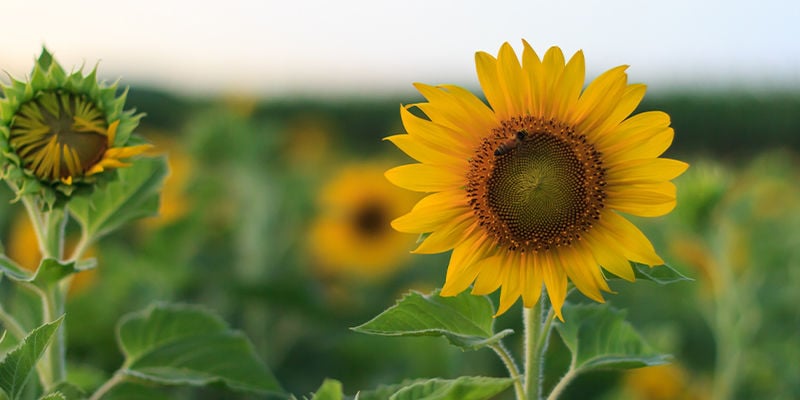
What can be more helpful than fake plants or simple decorative potted plants are true companion plants. These can, of course, also take the form of smaller potted plants, but they can also include more substantial potted or bedded plants that are older, more mature, and therefore bigger.
The benefit of growing among mature companion plants is that they offer a very high degree of visual camouflage. A couple of cannabis plants growing among a variety of other large and diverse plants have a much greater chance of fading into the general shrubbery and evading notice!
What’s more, certain plants, such as basil, mint, and lavender, can go some way to help mask the smell of weed. Granted, when a pungent cannabis plant is in full bloom, there’s not much you can do to mask the smell, but companion plants will help to drown out and disguise the subtler scents earlier on.
Companion plants also offer more than just camouflage and secrecy. They can help to deter or distract predators that would otherwise make a meal of your cannabis, and they can also attract beneficial insects that themselves feast on cannabis-munching creatures.
Companion plants for cannabis include:
Tall plants and thickets
If you want to take stealth to the next level, you can even grow much larger plants, thickets, and bushes. Some growers don’t have this option, but for those who do, you can really tuck your grow totally out of sight.
These sorts of plants can take years to grow, so in most cases you’ll only be able to utilise this option if you already have them. But if you’re a forward-looking type, why not plant some now and reap the rewards in years to come?
Erect a greenhouse
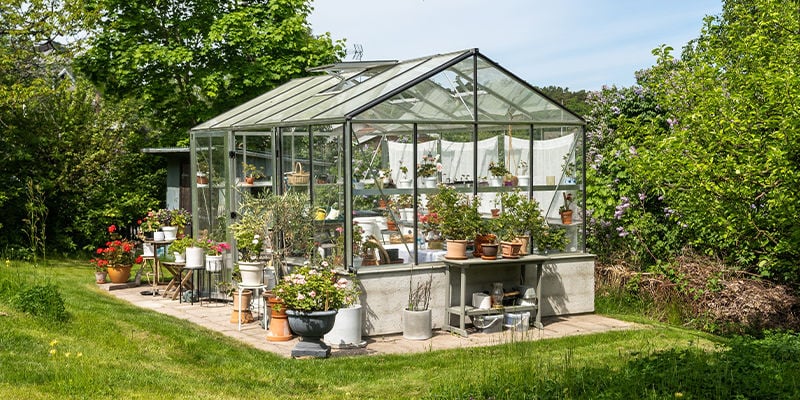
Artificial structures are a very easy way to hide a grow. A greenhouse is usually the best option, as these won’t draw undue attention, come in all shapes and sizes, and offer optimal growing conditions for cannabis plants!
Usually, plants growing inside a greenhouse are hard to distinguish, especially if there’s more than one type of species inside. If in doubt, you could even use a cloudy cover, as is common with polytunnels. This way, beyond an insubstantial green blur, people will have no idea what you’re growing.
Greenhouses and polytunnels aren’t your only options, though they are usually the best. You could also erect mesh or netting to disguise your plants. Depending on how and where you put them up, though, they might attract attention in their own right, as they could quite obviously imply that you’re screening something behind them. Still, if casually strung up in the corner of a garden, mesh or netting probably won’t attract too much attention.
Stick to low-odour strains
Regarding smell, if you’re really concerned, you’re probably best off going for some low-odour strains to avoid the problem in the first place. These cultivars are specially bred to give off as little smell as possible, or naturally do not exhibit a very strong scent.
Of course, the downside to this is that when it comes time to smoke, you might not get the full-bodied fragrances that some cannabis strains offer. However, the upside is that the olfactory senses of others probably won’t detect that you’re growing weed.
Growing low-odour strains can be more respectful too, depending on where you’re growing. Even if your neighbours tolerate or support your cannabis grow endeavours, they may not be so grateful about September stinking of weed. So growing less-pungent strains can be a great way to keep the neighbours on your side.
Consider LST or ScrOG
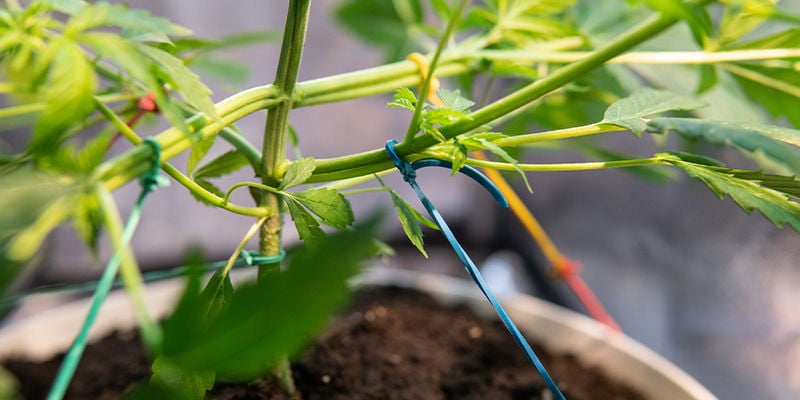
Cannabis plants that grow to three metres tall and become true monsters are obviously going to attract far more attention compared to smaller plants that top out at below one metre. While many of us dream of cultivating gigantic sativas that reach for the heavens, these sorts of plants can also have the police showing up.
So, consider growing smaller plants. One option is just to grow plants that naturally remain small, but this can be quite limiting when growing outdoors. Instead, if you’re up to the challenge, you can use training techniques, such as low-stress training (LST) or screen of green (ScrOG).
The former method simply involves tying a plant down laterally when it’s young so that it develops horizontally. This can keep plants much lower to the ground and increase their yield by exposing more bud sites to direct sunlight.
ScrOG involves growing plants through a mesh screen and then tying the canopy laterally to the screen. Once again, this encourages horizontal growth and exposes more bud sites to direct sunlight, improving the final yield and helping to keep plants under control.
Both of these techniques shouldn’t stress plants too much and can be practised safely by even novice growers. Just make sure you read up on the techniques thoroughly, and always be very gentle when manipulating your plants.
Choose your cannabis spot carefully
Last but not least—choose a good spot.
Exercise your theory of mind and perceive your growing space from the viewpoints of others. It’s fairly irrelevant how visible your grow is from your bedroom window, but what about your neighbour’s window, or the street? Grow your crop where it is least visible to those looking in from without.
Don’t forget to balance stealth with ease of access
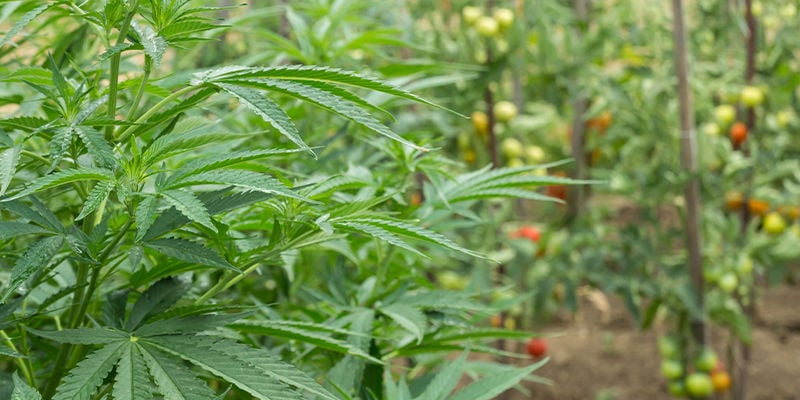
When choosing where to grow and how to camouflage your crop, bear in mind that you also need to care for it. Running a guerrilla grow operation in the middle of a forest might totally shield it from view, but can you actually access your plants as easily as you’ll need to in order to look after them? Also, does the spot get eight hours of direct sunlight a day?
If growing outdoors poses a serious danger to you, and you have to go to extreme lengths to shield it, consider whether it’s worth the worry. Would an indoor grow tax your mind less and pose less of a risk? Don't make your life harder than it needs to be! Wherever you choose to grow your weed, and however you go about it, ensure you treat it well and give it what it needs. Always choose strains, locations, and growing techniques that suit you and your growing style. Good luck!













 United States
United States










